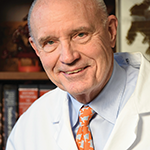
docstockmedia/shutterstock.com
“I was hoping for good news, but now I am worried,” was the response of a 29-year-old patient when I suggested an oncology referral. He was four months into treatment of dermatomyositis and had experienced significant improvement of his muscle strength, CPK levels and interstitial pneumonitis, but a follow-up CT scan showed that his spleen had enlarged to 16 cm. A great uncertainty had entered this case. I had to tell him that there was a possibility of malignancy. All I could do right then was reassure him that he was not alone and that we would work together with the oncologist to determine what course of management was best.
I am now in my ninth month of rheumatology practice. I was born in Nepal, where I went to college and medical school and did my internship. I came to the U.S. for my medical residency and rheumatology fellowship. I am very proud of my training program, which was great for me. However, in my transition to clinical practice at an academic medical center doing some patient-centered research, I quickly realized there was a gap between what I had learned in training and real-life experience.
It was during my internship that I became increasingly aware that ambiguous experiences with uncertainty, such as my patient with dermatomyositis, are part and parcel of rheumatology practice. However, it is now quite clear to me that the magnitude of this ambiguity was considerably more than I had imagined.
From Fellow to Practicing Rheumatologist
A year ago, in my final meeting with my fellowship director, we discussed some practical wisdom about the requirements for being a successful clinical rheumatologist. In a subtle, yet effective, tone, he told me that in making my transition to practice, I should keep certain things in mind, such as promoting a warm relationship with the office manager, attending and presenting at conferences, considering periodic 10-minute breaks throughout the workday to avoid burnout and active involvement with the Arthritis or Lupus Foundation.
In retrospect, this discussion was a good start; however, I had much to learn about the many facets and complexities of practice.
The first area was my relationships with my colleagues, staff, and most of all my patients. I was no longer a trainee. I was the attending physician with the ultimate practical and legal responsibility for my practice and patients. “The buck stops with me.”
I have five direct partners who have helped me learn the ropes, including familiarizing me with our practice sites and hospitals, helping me become efficient with the mechanics of practice, introducing me to medical and administrative colleagues, and assisting me in building my patient base. They counseled me about the realities of the business of medicine, the puzzles of meeting RVU goals and the importance of achieving comfortable Press Ganey scores.
I still have a hard time calling my partners by their first names and not Doctor. It’s a hard habit to break. Learning to work with staff five days a week with some supervisory responsibility—as opposed to three half-days in the office as a fellow—has been challenging. Good humor and steady temperament have been essential.
My Patients
My most important relationship, of course, is with my patients. As a physician, I have learned that I have multiple responsibilities: diagnostician, care manager, advisor, advocate and teacher (doctor Fr.= teacher). Integral to these roles is having my patients establish their trust in me.
My patients expect me to completely “fix” their problems as quickly as possible. However, because of the nature of rheumatic diseases, I am often only able to manage the problem and not cure it. I have to accept that I cannot make patients completely better. I am constantly reminded that rheumatologists take care of complex, immunologic, multisystem diseases, and it is the comprehensive diagnostic and management skills required that had attracted me to our field.
I am also experiencing another altogether different reality in my practice. I take care of a wealth of patients with nonspecific ailments, such as fatigue, generalized pain, insomnia and emotional comorbidities. I am, at times, dumbfounded while trying to locate the source of problem: mind vs. matter? The lack of lab tests that dichotomize the problems into yes and no, which once attracted me, now amplify the uncertainty in diagnosis.
“Listen to your patient; he is telling you the diagnosis.”—Sir William Osler
That axiom is oh so true. The world of uncertainty is much larger, broader and deeper than I had expected, and learning to manage it is perhaps as endearing as the initial passion that led to my selecting rheumatology. In this dilemma, I had to develop practical care approaches, including a realization of the importance of educating patients in simple terms about the why and how of illness and what to do about it. Quality education is an essential element in achieving a successful patient experience, such as explaining why a mildly positive ANA does not always mean lupus, validating that pain is real in fibromyalgia, or even discussing immune mimicry hypothesis of autoimmunity. Feeling well informed helps patients circumvent insecurity in their suffering, establishes trust and, at least in part, is therapeutic by itself.
One other area that has been a great dilemma is pain management. Pain is the cardinal manifestation of rheumatic disease. There is the conundrum of balancing effective, targeted pain management and the use of medications, including opioids, with undesirable side effects. Pain management was considered, but was not predominant, during my fellowship, and the role of opioids for musculoskeletal pain is limited by current science. The principle of patient self determination has to be balanced against the physician’s right and duty to practice medicine responsibly. I have had to learn to say “no” in certain circumstances.
Time Management
I never imagined that time management was going to be one of my greatest challenges. Regarding patients, I see many more patients each week than during my fellowship and have to be very efficient in my time spent with them. Asking them, “What has been bothering you the most in the past two weeks?” has proved to be a remarkably useful question to succinctly focus both their and my attention on the most important issues.
Many other things are going on concurrently during my work day, including patient calls and emails, dictation, driving to different practice sites and academic activities. I sometimes feel overwhelmed.
I received two valuable pieces of advice from one of my partners during my first week: “Don’t ever have the patient feel rushed,” and “Temper the length of your dictations.” Regarding the latter, he said that what a referring physician is primarily interested in is what the diagnosis is and what to do about it, and the rest of your dictation is usually not read.
Working closely with my staff as a team is also critical to keep flow efficient and to help establish rapport with my patients.
In terms of my understanding of the course of rheumatic diseases, it is now even clearer to me that I have to learn to accept great patience in managing them and that a “tincture of time” is frequently required to understand their course.
Maintain Balance
These perspectives and lessons learned during the beginning of my practice career have been enlightening, challenging and unexpected. I realize more fully now that my time, skills and energies have limits, and when used up in one part of my life, their absence affects other parts. These limits force me to define and redefine my professional and personal priorities, which is an unending task.
My wife and child are the most important part of my life—a fact that I must not, and will never, lose sight of.
This balancing act is like a novice conductor leading a symphony orchestra. For the music to be beautiful, each member and the conductor must execute their roles well and in harmony, just as I and other healthcare professionals must do for our patients.
I look forward to a long and satisfying career in rheumatology.
Santosh Bhusal, MD, is an instructor in medicine at the University of Pittsburgh School of Medicine.
Terence Starz, MD, is a clinical professor of medicine in the Division of Rheumatology at the University of Pittsburgh School of Medicine and is in practice at Arthritis and Internal Medicine Associates–UPMC in the Western Pennsylvania area. In addition, he is involved in clinical research projects, including rheumatoid arthritis outcome studies, and has participated in classification and intervention studies in fibromyalgia. He serves on the ARHP Practice Committee.



